Is Tokyo’s ultra-expensive Satsuki sweet bean bread worth it?【Taste test】
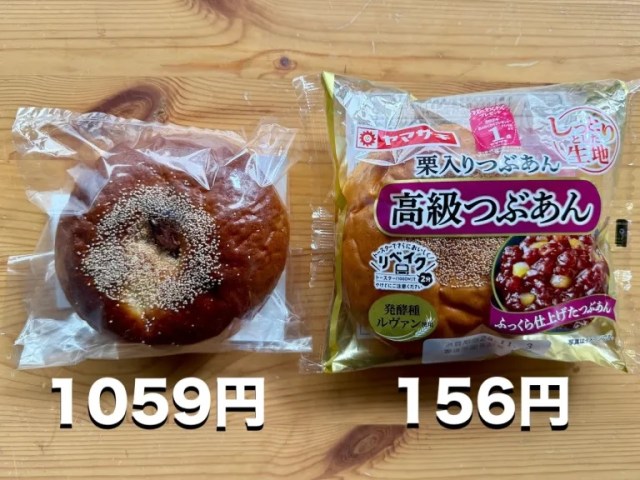
Premium version of common-people treat is almost 10 times the price of regular anpan.
Anpan, a bun filled with sweet red bean paste (an), is one of the most popular snacks in Japan. That’s “popular” in both senses of the word, as anpan is widely loved and also an affordable treat that’s truly for the common people.
You can find tasty anpan in any convenience store, priced at around 100 yen (US$0.70) or so. But if you’re looking for anpan in the food section of the Isetan department store in downtown Tokyo’s Shinjuku neighborhood, you can also find shockingly expensive anpan that costs 1,059 yen (US$7)!
With our curiosity piqued and stomach growling, we decided to see if this ultra-premium is worth its cost. Called the Shinguri Anpan, it’s being offered by the Isetan location of Satsuki, which is itself a satellite branch of the Satsuki bakery inside Tokyo’s New Otani luxury hotel.
▼ Satsuki’s Shinguri Anpan

Shinguri translates to “new chestnuts,” and Satsuki gives it that name because this anpan’s filling includes bits of chestnut from this autumn’s harvest. As luck would have it, Yamazaki, the company whose baked goods are the epitome of affordable mass-market sweet pastries and breads, also happens to be selling a chestnut anpan at the moment. Yamazaki calls it the Kuri-iri Tsubuan Kokyu Tsubuan (“High-Class Sweet Bean Bread with Chestnut”), but don’t let the name mislead you into thinking it’s a luxury-priced item, as it costs just 156 yen at convenience stores.
▼ Yamazaki’s Kuri-iri Kokyu Tsubuan
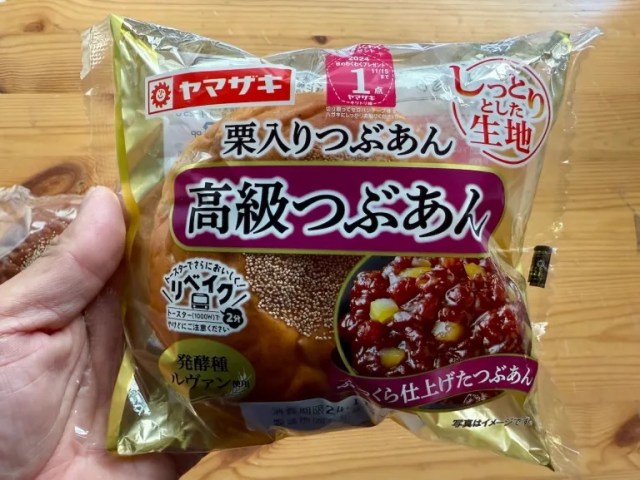
Taste-test duties fell to our Japanese-language reporter Masanuki Sunakoma, who started with the low/regular-priced Yamazaki anpan..
▼ Anpan is often topped with sesame, as you can see here.
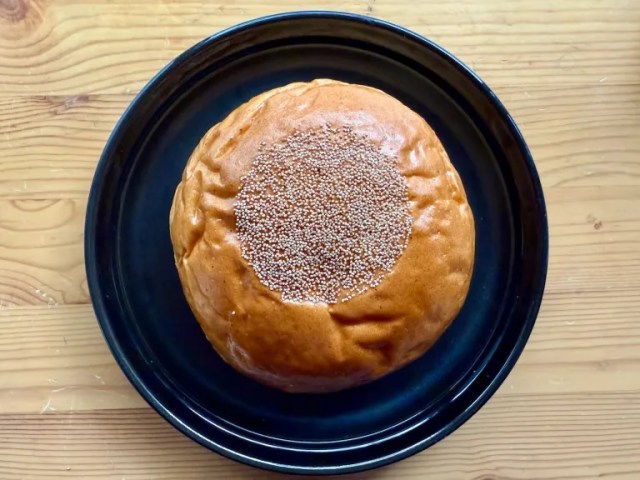
Masanuki took a bite, and was immediately completely satisfied. It’s not an exaggeration to say that for many people in Japan, when they think of how anpan tastes, they’re thinking of the flavor of Yamazaki’s version. It’s that ubiquitous, basically the baseline for how anpan is, in many people’s minds, meant to taste.
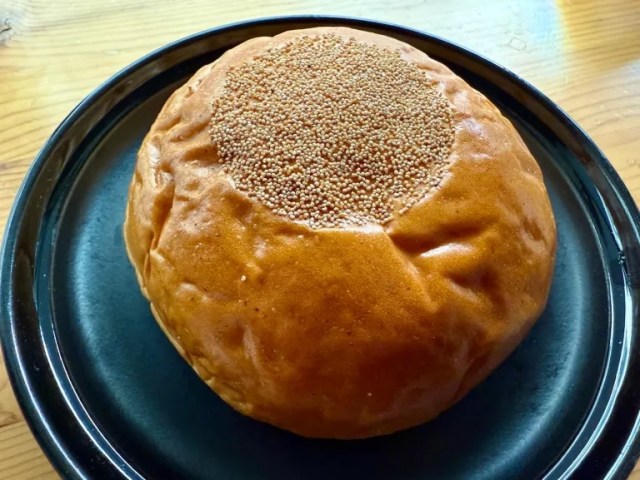
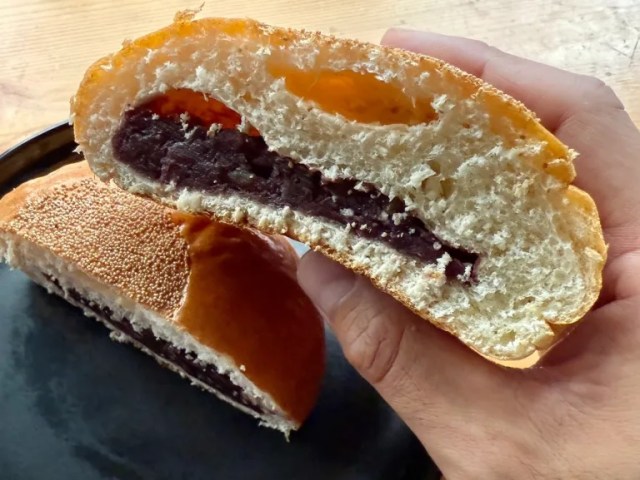
Yamazaki’s flavor exists in that magic not-to-sweet, not-too-subtle wonderland that makes the company’s affordable anpan something pretty much everyone from preschoolers to senior citizens enjoy. The flavor from each bite comes to a nice, clean finish, setting your taste buds up for another, and the anpan pairs well with coffee, milk, or green tea. The sweetness is invigorating, and it’s substantial enough to eliminate light hunger without leaving you stuffed and spoiling your appetite for your next full meal.
Now let’s take a look at, and a taste of, the Shinguri Anpan.
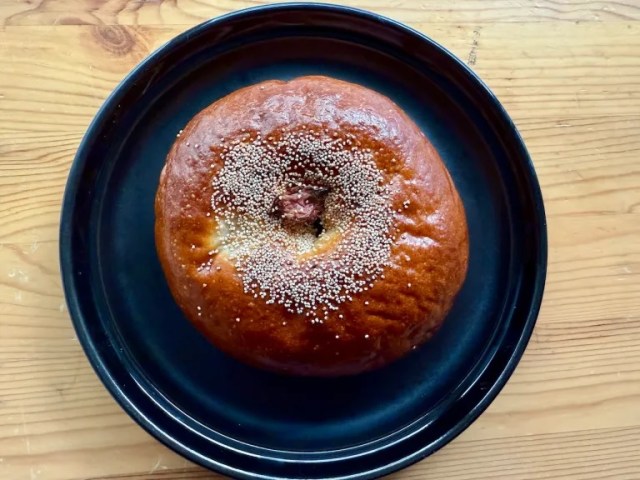
Visually, the Shinguri Anpan is darker in color, and the dough’s outer surface has more luster to it. Satsuki isn’t trying to justify charging seven to ten times more for the Shinguri Anpan than regular anpan just because the Shinguri Anpan is pretty, though. It’s made with several gourmet ingredients. Cascara (dried coffee cherry skin) and soy milk cream go into the dough, and the filling is fittingly fancy with sake kasu (sake lees), kuromitsu (brown sugar molasses), honey, and Hingya salt, produced at the southern end of Japan’s Izu Islands chain, also part of the ingredients, along with an edible salt-preserved sakura cherry blossom petal perched atop the bun.
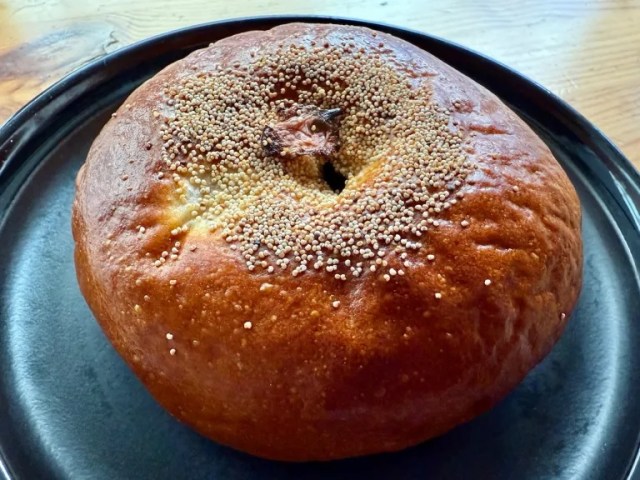
The texture of the sweet bean paste is also different between the two breads, with the Shinguri Anpan using koshian, smooth bean paste, while Yamazaki goes with tsubuan, in which some of the beans remain whole and provide additional texture. Neither type is seen as fundamentally higher-class than the other, though, so this is really more of a personal preference issue.
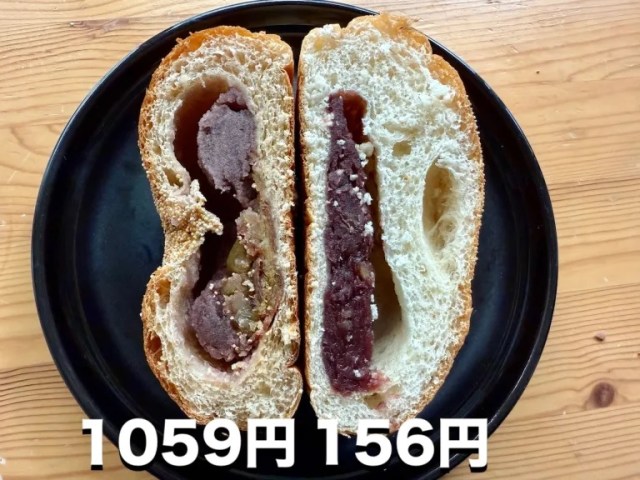
So how do all those high-end ingredients come together?
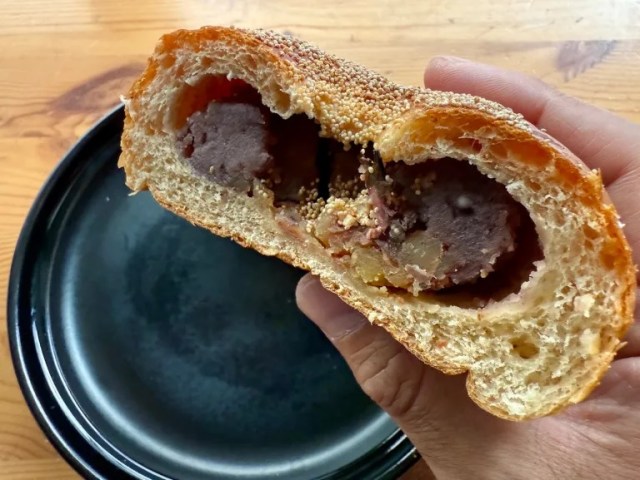
Amazingly. There’s tons of interesting complexity going on with the Shinguri Anpan, but it’s all balanced in such a way that the rich flavor of the chestnut still comes through too. While it’s definitely expensive, Masanuki has no regrets about shelling out for the the Shinguri Anpan, which is a unique and thoroughly enjoyable eating experience.
So does that mean that, if we set aside the price, the Shinguri Anpan is better than the pedestrian Yamazaki anpan? Not necessarily. While all of the fancy complexity of the Shinguri Anpan was great, it also means that its flavor is a few steps removed from the direct, old-fashioned appeal of standard inexpensive anpan. As one of Japan’s classic pastries, one that’s been around for generations, anpan isn’t just a sweet snack, but also a comfort food, and if that simple familiarity and sense of nostalgia is what you’re craving, Yamazaki’s anpan is the one you’ll want to go with.
However, Masanuki came away with a different opinion from another head-to-head taste test he did comparing an extra-expensive cream bread from Satsuki with one from Yamazaki.
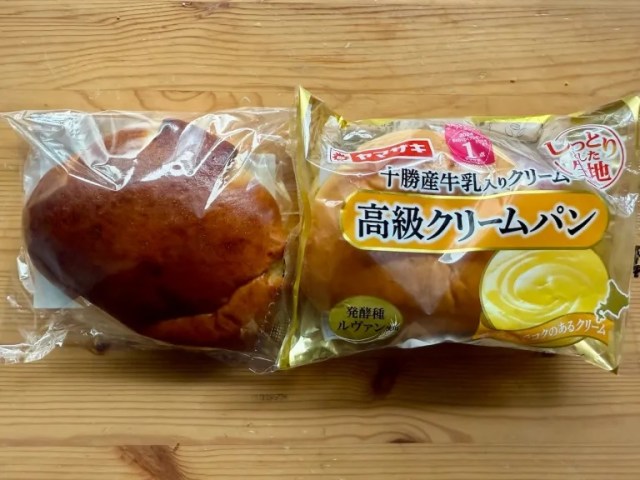
Again, there’s a huge price difference, in relative terms. Yamazaki’s Kokyu Cream Bread sells for just 156 yen…
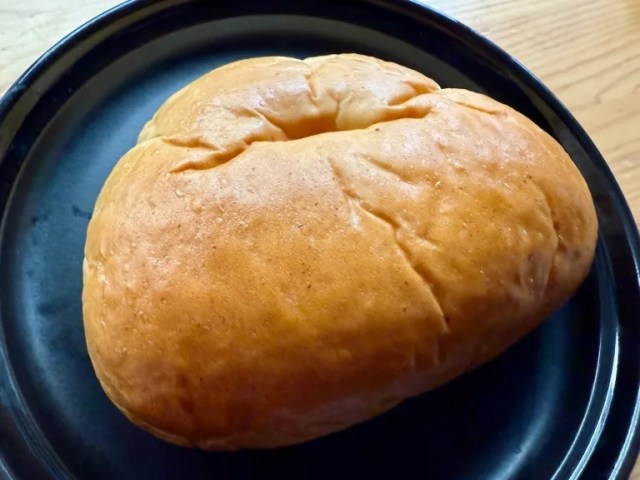
…while Satsuki charges 918 yen for its Cream Bread.
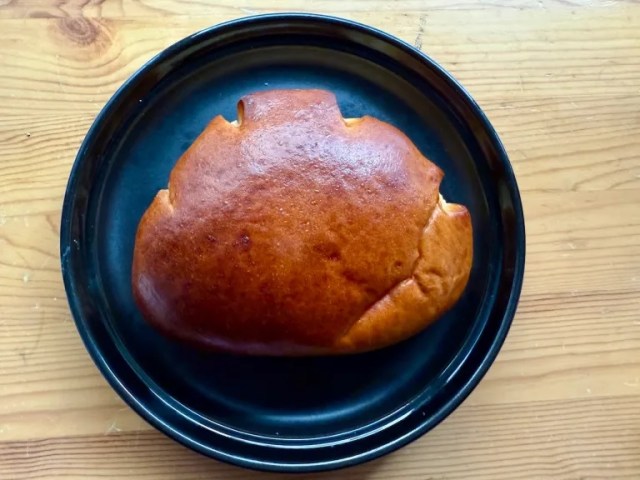
Yamazaki’s version is a great example of what makes cream bread a bakery staple in Japan, with a fluffy texture to the bun and a filling of custard cream made with milk sourced from Hokkaido Prefecture’s Tokachi dairy region. It basically tastes like happiness, Masanuki says.
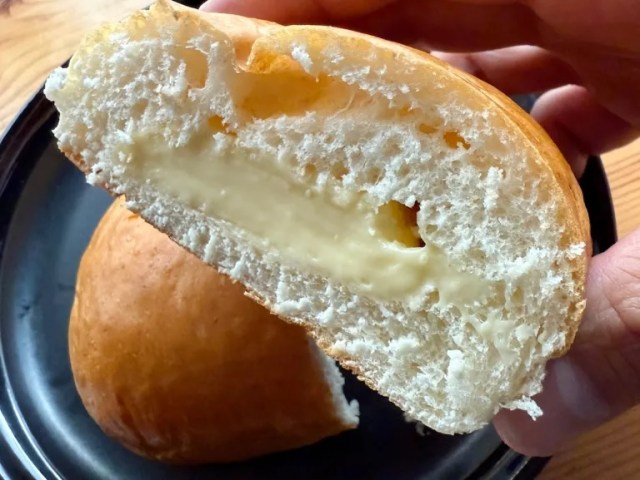
Satsuki’s filling here too is made with a special ingredient. This time it’s wasanbon, a high-end fine-grained sugar made in Japan and originally used for traditional Japanese confectioneries.
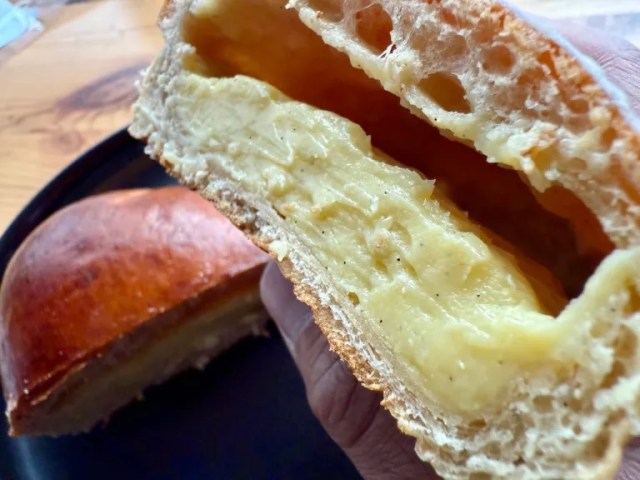
Still, Satsuki’s Cream Bread filling sticks closer to established expectations than its anpan filling did. Whereas the Shinguri Anpan felt like it had drifted far enough away from the baseline that it might not satisfy an anpan craving, Satsuki’s Cream Bread is a really, really flavorful cream bread, and one with a lot of custard inside.
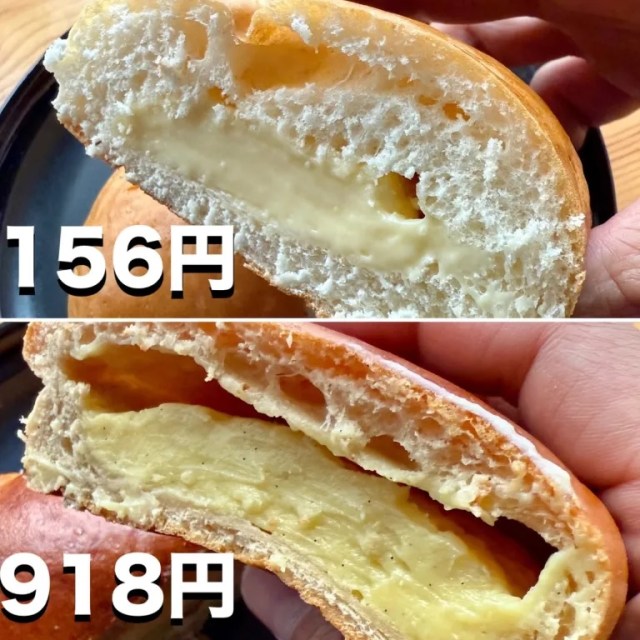
When it comes to anpan, though, sometimes keeping it simple really is the best way to keep us happy.
Related: Isetan Shinjuku official website
Photos ©SoraNews24
● Want to hear about SoraNews24’s latest articles as soon as they’re published? Follow us on Facebook and Twitter!
Credit:

0 comments: